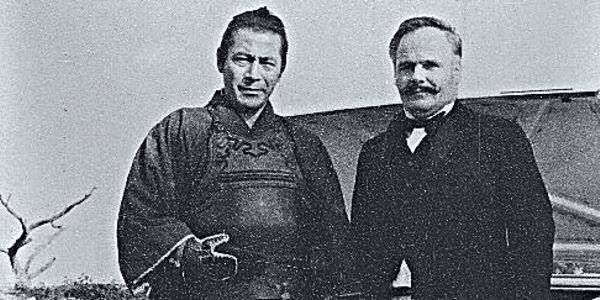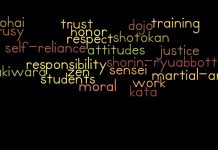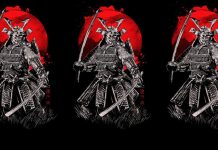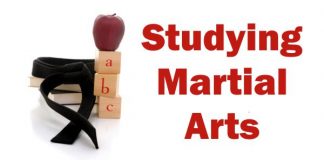The following observations are from the late Arthur Tansley, the noted martial arts photographer who lived in Tokyo for many years.
Note: Words like sensei or dojo have no plurals. For instance one sensei, ten sensei, etc. No disrespect is meant by using the family name without the overused sensei. The opinions expressed are my own, other people may have different views.
Martial arts training in Japan is a lot different than it is in western countries. Sensei (instructors) usually demonstrate a technique several times with a student, then everyone pairs off and practices the movements. Assistant instructors may move around correcting mistakes. But do not expect any explanations. Questions are not encouraged.
Most karate sensei (instructors) do not speak English or any other language except Japanese. There is a foreign section at the Kodokan Judo Institute where most of the instructors speak English, and in some cases French or Spanish. Mostly they have taught abroad so understand the foreign mentality.
Many karate instructors are bullies who use every opportunity to inflict pain and injuries on students (of karate), especially gaigin with some experience. I met a Greek nidan (second degree) from Australia who had his jaw broken on his second day in the dojo.
A newly graduated instructor at the Shotokan honbu (headquarters) in Ebisu was taking on several black belts one at a time as part of his graduation test. An Arab who was also a judo nidan threw him and pinned him down with a judo waza (technique). On standing, the instructor grabbed the Arab around the neck and several times smashed his head into the wall whilst the examiners looked on in approval.
Later I asked the new instructor which university did he belong to. He replied “Kokushikan” I then said “The killer university”. He asked my friend who I was. Luckily I was there as a photo journalist or I would have been in deep trouble.
One day I went to the Hoitsugan to interview Nakayama with the editor of an Arab budo magazine. A Jordanian diplomat complained that the Shotokan instructors were beating him up during the classes. Nakayama advised him to join the Hoitsugan as they were kinder. The Jordanian was tall, strong and somewhat arrogant, also he had done some boxing so I could understand why they made an example of him.
During my early days in Japan I visited the old Shotokan dojo in Suidobashi which was previously the Kodokan. There was an instructor there nicknamed the animal, and I watched him smashing his training partners. After finishing practice they were covered in blood. Shotokan is supposed to be light contact only but that is openly ignored.
I practiced for a while at the Kyokushinkai honbu in Ikebukuro, the first word that I learned was “Maita” (give up) or (give up?) otherwise you could be severely injured. One day a hunchbacked dwarf joined the training, and he managed to hit two gaigin brown belts in the testicles knocking them unconscious and probably ruining their love life for a while. That was certainly no accident. I was forty years old and a beginner so I never had any problems with bullying.
One thing that I noticed was that the training showed no connection to actual contest. During sparring practice the sempai (seniors) held their hands near their ears rather than the way we were being taught. I photographed many Kyokushinkai tournaments, and the main knockouts were by mawashigeri (roundhouse kick to the head). Another KO was by a big man punching down to the chest of a smaller man. I saw two men of equal size and power taking it in turn to punch each other somewhat in the manner of the bare knuckle boxing. They were both completely exhausted. Even though they were top competitors there were no signs of any skill.
Incidentally many Kyokushinkai matches were fixed, Gaigin would be told which round to lose. When you see a large skilled gaigin commit a deliberate foul on a much smaller opponent when he is ahead on points, then you know it is a fix. Willy Williams who had fought a bear was easily beating his opponent when he attacked him off the contest area and then attacked the referee. The judges joined in and managed to subdue Willy. All an act so that Sanpei cold go on to the final.
Before the Kyokushinkai matches competitors had to break wooden boards, then in case of a draw the one who had broken the most boards was declared the winner. Sanpei and another karate sempai used to take it in turn being the winner so one of them would only break a few boards.
Sanpei was a very good example of fighting spirit. As a brown belt he fought Sato the reigning champion and a much larger man. Sato hit Sanpei in the mouth knocking our several teeth. The doctor was applying first aid, and Sanpei kept jumping to his feet to get stuck in again. Sato motioned him to stay down. On the other hand I saw a top Shotokan competitor get hit on the nose, and all the fighting spirit went out of him. The match was re-fought later but he had no go in him whatsoever.
Sometimes Oyama would reverse the referees decision. Many of the early karate instructors had started out doing judo. I saw Azuma fight Howard Collins from Wales. Every time they got near, Azuma threw him. Poor Howard never stood a chance. Oyama stopped the match and said that this was karate not judo, and Howard would go on to the next round. When the next round came it was Azuma who fought.
An editor and I along with an interpreter interviewed a top Shotokan instructor and competitor. He boasted that in order to test his fighting spirit he decided that he would kill something that he loved. He put on his karate gi and put a spare black belt around his pet dogs neck and hung the dog from a branch of a tree. Then kneeling in zazen with his katana on the ground in front of him, he bowed to the struggling dog. He then placed the katana firmly in his belt. Grasping the hilt with his right hand he quickly rose to his feet drawing the katana and with an upwards sweep disemboweled the pet that he loved dearly.
With a shake of the blade he removed the blood, and sheathed the katana. He put the dogs body into an already dug hole and covered it in. Not only to give the dog a burial but also to remove any evidence as there is a law against animal cruelty. Had he been a Korean instead of a Japanese he may have eaten it as dogs are a delicacy in Korea (and China). Japanese prefer raw horse meat.
Most young, keen gaigin (foreigners) practice at university dojo. But be warned, karate in Japanese universities is deadly serious, and I do mean deadly. Several members of the Kokushikan university club wanted to resign so they were beaten up by the sempai (seniors) and sensei. Two died of injuries and the club was barred from the campus.
Instead of disbanding they moved to the Hoitsugan in Ebisu and retained their club name. The Kokushikan university is well known for bullying, several members of the hiking club tried to resign and were loaded up with heavy backpacks and marched until they dropped from exhaustion. At least two died on the spot, others were taken to hospital.
I once watched the kendo club practicing in the large dojo. One student slipped and fell to the floor where he was immediately beaten by the others using shinai (split bamboo swords). Kendo is thought of as a true samurai sport. The university has produced many judo, kendo and karate champions.
Instructors of a Shorinji kempo dojo were celebrating the new year when they heard the sound of motorcycles outside, They dragged the two teenagers inside the dojo and beat them with boken (wooden swords). One died on the spot and the other one went to hospital. Many Shorinji (Shaolin in Chinese) sensei are Buddhist monks. This did not stop a hachidan (eighth dan) from divorcing his wife and marrying his nineteen year old student. Fornication seems to be one of the instructor’s perks.
Sumo is perhaps the oldest and most traditional of all the Japanese fighting arts, Many foreigners have tried their hand but few have stuck it out. The training is extremely tough, in addition you have to do many chores, cleaning, cooking, washing your senpais (senior) body and even wiping his behind after defecating. Yes! That’s right, sumo wrestlers are so fat that they cannot reach their own behinds.
Top ranking sumo wrestlers are treated like gods, but as we know from mythology, even gods have their human frailties. Gluttony is part of their training so that they can put on weight. But in addition many of them consume vast amounts of alcohol which is why many of them die of kidney disease. It is rumored that sometimes matches are fixed usually so someone will not be demoted.
Lavish weddings are held for the super heroes where the bride is sometimes several months pregnant. Sumo wrestlers have their pick of women as they are surrounded by groupies. I once asked a friends wife how sumo wrestlers made love, but she ran away without answering, An American female journalist told me about her friend who would draw nude sumo wrestlers and then make love.
Some foreigners especially Hawaiians have made it to the top ranks and have made a fortune from T.V. commercials. They also have fan clubs that support them in a fantastic life style. Hey! If you are young, strong, big and fat, can take punishment and ignore injuries, then why not give it a go?
Gradings are a big part of modern martial arts. Quite often the grade has no relation to ability especially in judo. I have seen white belt fifteen year old students beat university yondans (fourth dans). There are certain requirements but if you have a sponsor this can be waived. An Australian friend got his sandan (third dan) with only two & a half points instead of the three points needed. On the other hand I had nine & a half points before I got sandan. Later the Aussie came back and got yondan with no official points. His club in Melbourne was named after Shinojima hachidan (eighth dan). This is not to say that he was not worth the grade. I heard recently that he won the masters championship in Australia. (Good on yer mate!)
When I had scored three points and had five years in grade I asked Kotani the head instructor and a kudan (ninth dan) when I could get my yondan (fourth dan). He took me into the instructors office and produced an information book. He told me that I had the requirements for yondan. In fact it was another three years before I was promoted. I was already in my fifties so did not stand much chance fighting yondans twenty or more years younger than myself. I did manage one draw but got slaughtered in other matches. I also got an ippon in the Tokyo seniors. My opponent had a higher grade but was smaller and older than me so I was able to win with a strangle hold.
Grading in ninjutsu is also a matter of the senseis opinion. For example for yondan one test is for the examinee to sit in zazen with closed eyes in a darkened room. The examiner enters and stands behind the Ninja and raises a katana (live sword). Then he concentrates and delivers a blow to the head of the seated Ninja who senses the blade, and rolls away.
A Koppo master saw this on TV and told me that the seated ninja rolls first and then the ninja master brings down the katana. It is highly unlikely that the master would actually try to cleave the ninja in two.
I visited the Koppo dojo with Andy Adams a top sumo and budo author and journalist. We were shown a video of the Koppo master in a Taiwan tournament where he knocked out several of his students. He also demonstrated Koppo techniques that left his partners rolling on the floor. One of his students was a pro wrestler that later founded Shooting a form of pro Koppo. Later it became shoot boxing and spawned several other forms of Koppo.
Japanese kick boxing was also fixed in the early days. Muay Thai boxers were brought over on the understanding that they would lose. An American friend who had been a marine boxing champion became the all Japan champion in his weight class. He was called “Machine gun punch Ray Eddler”. He retired whilst still champion but needed money so made a comeback. His opponent was a strong tough looking Thai. Every time Ray landed a punch he was kicked behind the knee. Finally Ray could not stand up and was carried off on a stretcher. No longer a champion the Thai did not have to lose.
Of course we all know that pro wrestling is fixed. I used to photograph women’s pro wrestling for a strange English magazine. I was really fooled when I saw a woman wrestler with blood pouring from her head just a few feet from me. Later Maki my Greek friend told me that as the wrestlers were fighting outside the ring, a bunch of assistants were gathered around trying or rather pretending to part them. One girl reached under the apron and sprinkled a red liquid on one of the wrestlers who let out a howl of supposed agony. Apart from that, those women were really tough and some were also attractive.
Wrestling, boxing, etc. is as much a martial art as judo or karate. None of the fighting arts or ways have anything to do with the military, except maybe jukendo (bayonet fighting) and even that is nothing like the bayonet fighting I was taught in the infantry. But then we used real rifles and bayonets though sometimes we left the scabbard on so as not to do any real damage. Some squaddies did get knocked out from a too vigorous butt stroke. That is a strike or stroke with the butt of the rifle nothing to do with stroking butts.
I saw many jujutsu demonstrations where little old ladies severely punished strong young men which would be impossible in a real situation. In Aikido I saw so called masters point their finger at someone who would then do a backward somersault. This is not to say that there are not some genuine martial artists out there, but they are few and far between.
July in the year 2000 a karate instructor bodyguard to a religious cult was sentenced to hang for his part in the murder of a family. He actually kicked and punched the victims as they were being strangled to death. Martial artist instructors are no better or worse than other people, they only think that they are better.
I have met all kinds of dan grade, homosexual men and women, perverts, rapists, alcoholics, thugs, thieves and gangsters, etc. I even knew the owner of a family kendo dojo who killed his own brother with a katana. A few years in jail and he was back mixing with his yakuza friends.
Arthur Tansley Tokyo August 2000







